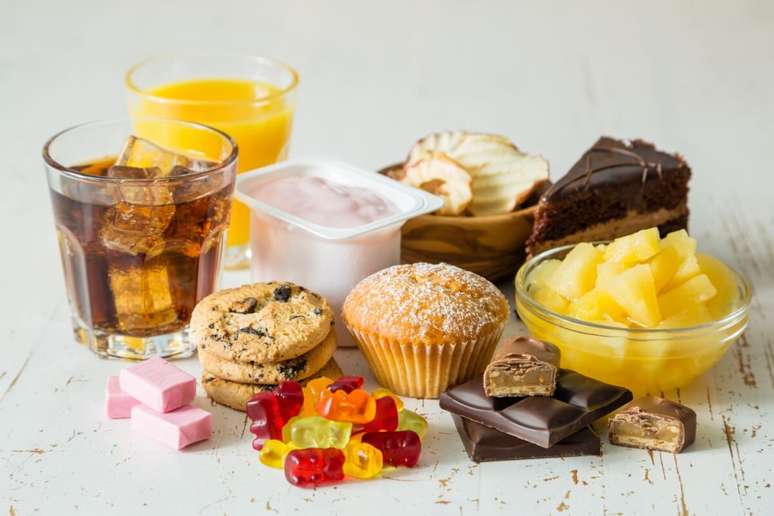The expert explains the aspects to be aware of and make healthier choices in the market
If you want to eat healthier it is important to pay attention to the choices you make at the supermarket. To avoid falling into traps, you need to learn to look at some details on the labels. After all, they don’t exist just to make the product more attractive.
Janaina Karine Andreazza, doctor in Chemical Engineering and teacher at UniSociesc (private higher education institution), graduated in Food Engineering, warns of the importance of this habit. According to her, products sold as “healthy” can contain a large amount of preservatives, sugars and fats, and the consumer takes them home believing they have made a good purchase.
«You have to get used to choosing by reading the ingredients of the product, knowing the quantity of fats, proteins, sugars and vitamins inside the package. We often buy yogurt, for example, thinking that it will only contain milk and yeast. But, in some cases, there is much more inside that package,” he explains.
Changes to labels established by Anvisa
Some innovations defined by the National Health Surveillance Agency (Anvisa) have recently come into force which will make life easier for those looking for more health on their plate. These new Anvisa rules will help, but even so the change depends on the willingness to dedicate a little more time and attention when purchasing.
The main change is that products with high doses of sugars, saturated fat and sodium now have a magnifying glass symbol at the top front of the label. The goal is to make the consumer understand that the high content of this nutrient can be dangerous for their health.
For the expert, these ingredients really deserve this visibility. After all, studies record a link between habitual consumption and a greater risk of obesity, diabetes, cardiovascular problems and other chronic diseases. Other important innovations are the inclusion of more information on the packaging and the standardization of the color of the nutritional table, which will now have black letters and a white background to make it easier to read.

General rules for processed products
Despite the warning on the packaging, ultra-processed foods should not be demonised. It is important that the consumer knows what he is buying. “I don’t think it’s necessary to eliminate ultra-processed foods from your shopping list. It’s just important that they are consumed in moderation, in an intelligent way. Like everything in life, what matters is balance,” he says. Likewise, Janaina Karine Andreazza believes that it is worth choosing products with adequate values of vitamins, proteins and carbohydrates.
The expert points out, however, that a product without the magnifying glass warning on the packaging is not necessarily greet. Many companies have not yet adapted. The deadline to comply with the new rule expires in October 2025.
Beware of jokes
When purchasing, the rule of elegance usually applies: less is more. The fewer ingredients added, the more natural the food will be. When the list is too long, the consumer can make mistakes. “Sometimes he reads and doesn’t find the word ‘sugar,’ for example. But sugar is ‘disguised.’ It can be in the form of maltodextrin or syrups, like corn syrup. Everything is sugar. There’s no way around it.” exit. I need to observe and research if necessary”, teaches the professional.
A valuable tip: the items that appear first in the description of the ingredients are those that are found in greatest quantities in the product. Therefore choose those low in fat, sodium and sugar, but rich in fibre.
Zero sugar and zero lactose
Even those looking for sugar-free or lactose-free food must open their eyes. Janaina Karine Andreazza points out that Brazilian legislation allows a certain amount of addition of these ingredients. Sometimes a label says “zero sugar,” but that’s not the case.
“You have to be careful, because the unit of measurement is always shown on the label. For example, if the ingredient has 0.001 grams, the industry can round it to zero. The law allows it. So the consumer buys it thinking that so be it.” There’s no sugar, but it has it. Not much, but it’s there,” he says.
As regards lactose, another rule applies: if the food contains 100 mg lactose per milliliter, you can consider it zero lactose. Only gluten has a stricter rule, as it directly interferes with autoimmune diseases. So if it contains only traces of gluten you need to note it.
Change that happens little by little
But will the changes make a difference in food choices? The UniSociesc professor believes so. Brazilians are slowly adapting and creating the habit of reading and understanding packaging. A change that may take time, but will make a difference to your health and well-being. “Little by little people will understand that it is on labels that we find the information necessary to define whether or not food is suitable for our consumption, for our health”, he concludes.
By Genara Rigotti
Source: Terra
Ben Stock is a lifestyle journalist and author at Gossipify. He writes about topics such as health, wellness, travel, food and home decor. He provides practical advice and inspiration to improve well-being, keeps readers up to date with latest lifestyle news and trends, known for his engaging writing style, in-depth analysis and unique perspectives.









